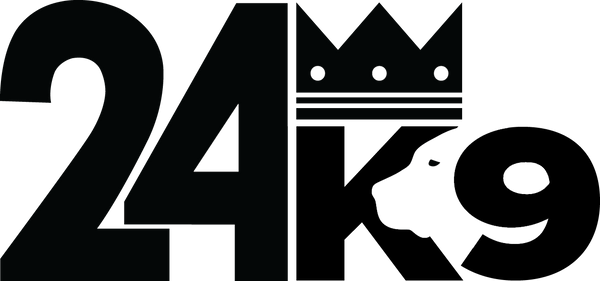
Common Mistakes Dog Owners Make and How to Avoid Them

Every dog owner wants a well-behaved, happy dog, but sometimes, without even realising it, we can make mistakes that lead to unwanted behaviours. Whether it’s inconsistent training, using the wrong techniques, or not reinforcing good habits at home, these small missteps can add up and make training more difficult than it needs to be.
The good news? Every mistake has a solution. With the right approach, patience, and consistency, you can set your dog up for success both inside and outside the home.
Let’s break down some of the most common training mistakes dog owners make and how to fix them.
Mistake #1: Inconsistency in Rules and Commands
Dogs thrive on clear, consistent communication. If one day they’re allowed on the couch and the next day they’re scolded for it, they’ll get confused. The same goes for commands, if you say "down" one day and "off" the next, your dog won’t know what you expect.
How to Fix It:
✔️ Decide on house rules as a family and make sure everyone sticks to them.
✔️ Use the same commands every time for specific behaviours (e.g., always say “sit,” not “sit down” one day and “park it” the next).
✔️ Reward good behaviour consistently—dogs learn through repetition.
Mistake #2: Not Reinforcing Good Behaviour Inside the Home
Many dog owners focus only on training outside, like during walks or at the park. But your home is where training really starts. If your dog isn’t learning structure inside the house, it’ll be much harder for them to behave outside.
How to Fix It:
🏡 Set up daily training routines inside the home—practice sit, stay, and leash walking in quiet areas first.
🍖 Use mealtimes as training sessions—ask your dog to “sit” or “wait” before eating.
🚪 Reinforce calm behaviour—if your dog jumps when guests arrive, teach them to sit before greeting people.
By building structure at home, you’ll notice big improvements in your dog’s overall behaviour.
Mistake #3: Allowing Pulling on the Leash
One of the biggest struggles dog owners face is leash pulling. Many people allow their dog to pull because they think it’s just part of the walk. But when your dog pulls, they’re learning that they get to go where they want, reinforcing the behaviour.
How to Fix It:
🐾 Use structured walks—don’t let your dog lead the way. Walk with purpose, and teach them to check in with you.
✋ Stop when they pull—if they tighten the leash, stop moving. Only resume walking when the leash is loose again.
🛠️ Use the right training tools—the Kontroller Head Halter paired with the Komfort Slip Collar and Leash provides gentle, effective control, making walks easier for both you and your dog.
Mistake #4: Using Too Many Treats Without Fading Them Out
Treats are great for training, but if you rely on them too much, your dog may only listen when food is involved.
How to Fix It:
🍖 Start with treats, but gradually phase them out by using praise, petting, or play as rewards.
🗣️ Use verbal reinforcement—a happy "Good job!" should carry as much value as a treat.
🦴 Switch to intermittent rewards—reward your dog every few times instead of every single time.
Dogs should listen because they trust and respect you, not just because there’s food involved.
Mistake #5: Not Practicing Impulse Control
Many behavioural issues like jumping, barking and leash pulling stem from a lack of impulse control. Dogs that can’t regulate their excitement will struggle in training.
How to Fix It:
✔️ Teach “wait” before meals—this helps your dog learn patience.
✔️ Use leash training to reinforce calm behaviour before heading outside.
✔️ Practice “place” training—send your dog to their mat and reward them for staying calm.
Teaching patience at home translates into better behaviour in all situations.
Mistake #6: Ignoring Socialisation and Exposure
Many owners unknowingly limit their dog’s socialisation by avoiding new environments, people, and dogs. But a dog that isn’t exposed to different situations can become fearful, reactive, or overly excitable.
How to Fix It:
🐶 Introduce new experiences gradually—walk in different locations, let them experience new sounds and surfaces.
🐕 Set up controlled interactions—expose them to calm, well-behaved dogs instead of chaotic environments.
🚗 Take short training real-world trips—practicing “sit” at a café or park reinforces good behaviour in real-life situations.
The more positive experiences your dog has, the more confident and well-behaved they’ll be.
Mistake #7: Getting Frustrated and Giving Up Too Soon
Training a dog takes time, patience, and a lot of repetition. Many owners give up too soon when they don’t see immediate results.
How to Fix It:
🔄 Remember that learning takes time—dogs need consistency to understand what’s expected of them.
💡 Celebrate small wins—even if it’s just one second of calm behaviour, reward it!
🛠️ Use the right training tools—if your dog is struggling with pulling, lunging, or ignoring commands, the Kontroller Head Halter, Komfort Slip Collar, and Komfort Leash can give you better control while reinforcing proper behaviour.




